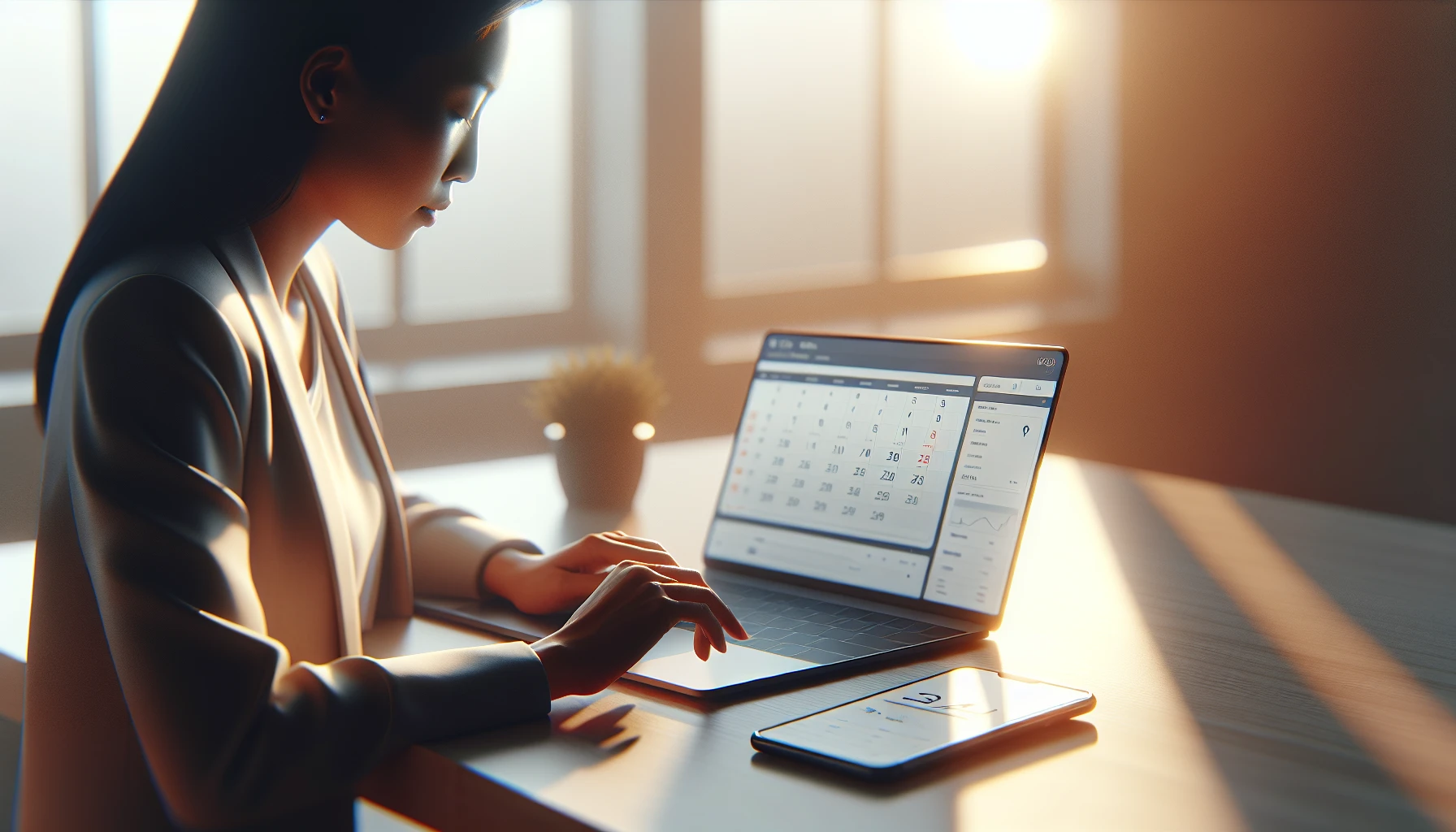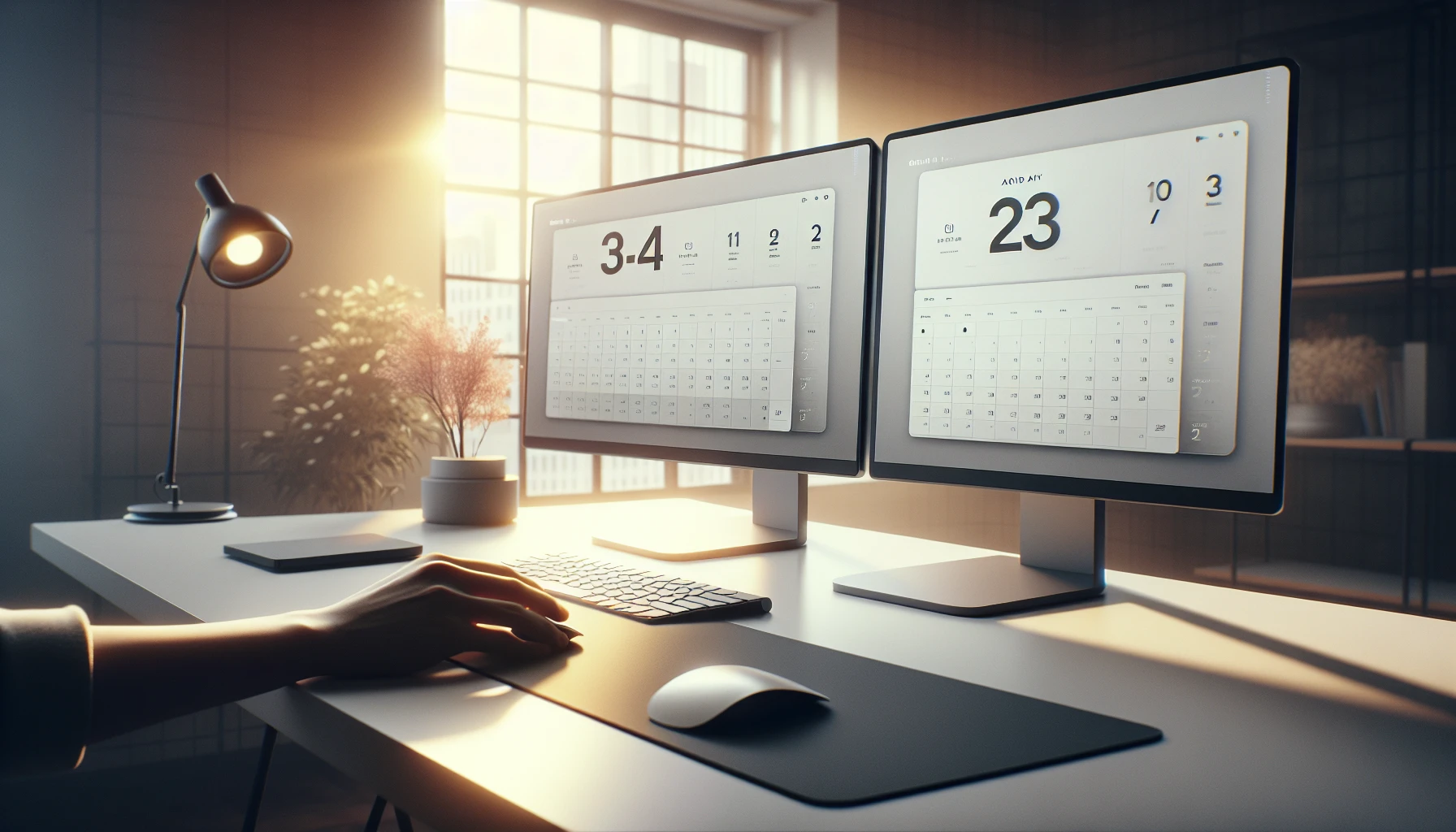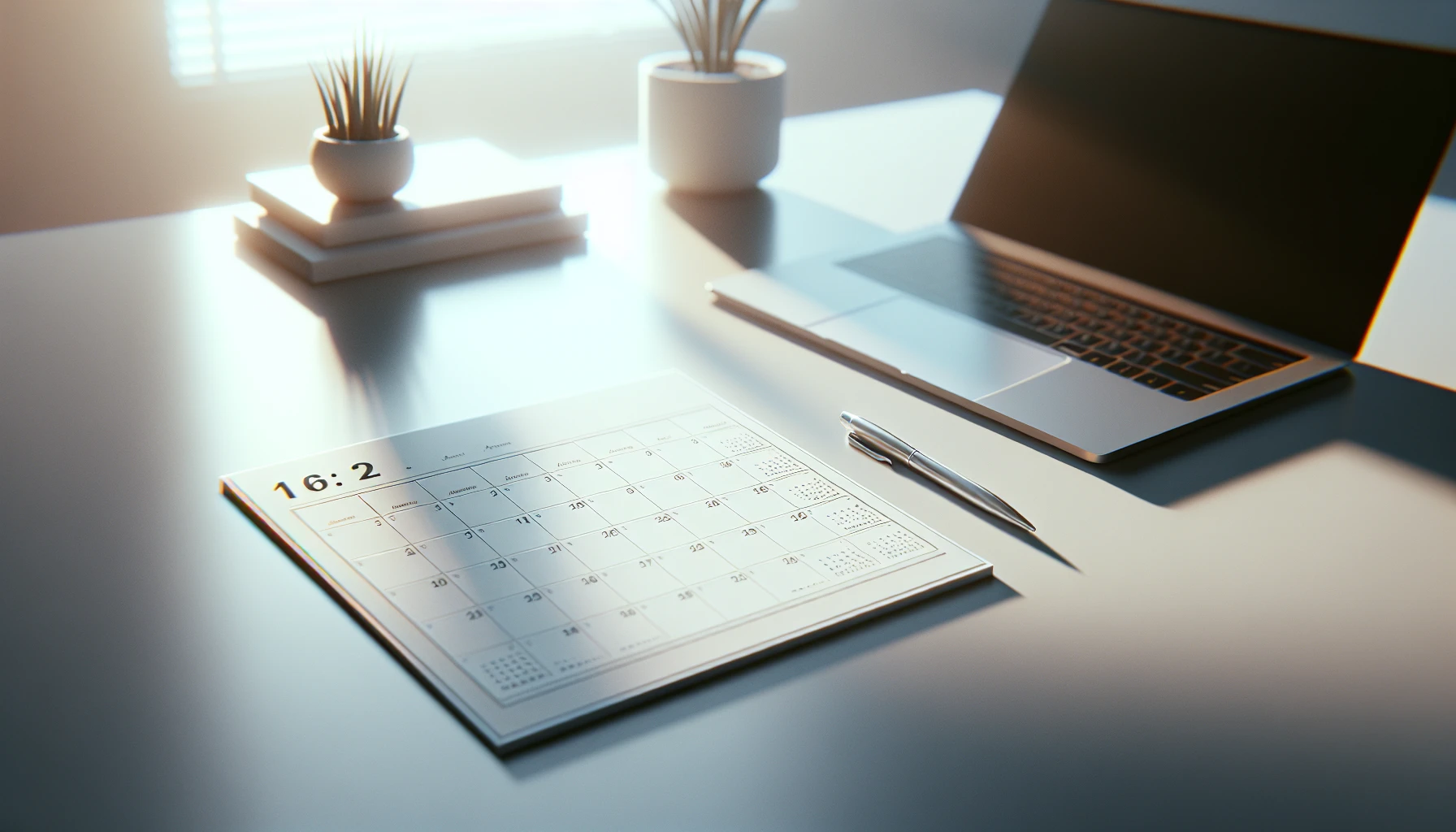· Ricardo Batista · 12 min read
Meeting reminder timing - when to send for best turnout
Timely meeting reminders boost meeting attendance with simple email and text alerts; custom RSVP messages and easy tools help everyone.

Sending meeting reminders at the right moment is really important for better attendance. Sometimes people ignore early or late notifications, so finding a balance makes a big difference. It might be trial and error to discover what works best for your group, but using simple tools like email or texts can help ensure everyone stays informed and on track.
Key Takeaways
- The right timing for meeting reminders really boosts attendance
- Personalized reminders make messages feel friendlier and less robotic
- Using scheduling and automation tools like YouCanBookMe and GReminders streamlines the planning process
- We excel at automatically pinging the attendees that arrive late to your meetings, ensuring everyone stays in the loop
- Testing different reminder times can help you find what works best for your group
The Importance of Timing in Meeting Reminders
Meeting reminders aren’t just about nudging people. The right timing can impact attendance, spark better collaboration, and even help in managing last-minute schedule changes. When you’re sending a reminder, it’s key to think about how early or late the message reaches the recipient. Getting this balance right means fewer no-shows and more engaged meeting participants. Here are some reasons why timing is so important:
- Boosting Attendance: A reminder sent too early may be forgotten, while one sent too late might not give enough time to prepare.
- Effective Preparation: Reminders serve as waypoints that help people manage their schedules, ensuring everyone is on the same page.
- Prompting Quick Action: Especially with automatic pings for late arrivals, the right reminder can gently nudge people who might otherwise drag their feet.
Why Timing Matters
When planning your reminder schedule, consider these key points:
- Anticipate Delays: People can be busy or caught off-guard. Scheduling your reminders with a bit of buffer time helps accommodate any unexpected delays.
- Personal Time Zones: For global teams, adjust your timing to suit varying time zones and work hours.
- Meeting Context: A quick team catch-up might need just a minute’s warning, while a formal client meeting may need a reminder a few hours before.
Using personalization strategies, you can tailor the reminder’s timing based on the meeting’s importance and the specific roles of the participants. This leads to smoother meetings and better collaboration.
Strategies for Effective Reminder Personalization
Personality is the secret sauce behind effective reminders. A generic message might work sometimes, but a personal touch goes a long way. It just proves that you’re not sending out an automated message without thinking of the recipient. You can tweak the message to match the tone and urgency of your meeting.
Personalizing Your Reminders
Personalization isn’t just about using a person’s name. Here are some practical tips:
- Segment Your Audience: Create different messages for different groups. For instance, a sales meeting might need a different tone compared to a team sync-up.
- Include Key Details: Mention aspects like special instructions, agenda highlights, or even a fun note to make the reminder more engaging.
- Use RSVP Options: Allowing attendees to confirm or decline directly from the reminder helps you gauge the meeting’s readiness.
Step-by-step approach:
- Identify your target audience for the meeting.
- Create custom templates that address each group’s concerns or interests.
- Use a tool like Meeting Reminders to incorporate real-time updates and RSVP options.
For further guidance on email templates, check out this guide on sending meeting reminder emails.
Template Optimization for Efficiency
An optimized reminder template is key to effective communication. Here’s how to streamline your template:
- Keep It Simple: Use clear and concise language that cuts to the chase.
- Highlight the Essentials: Focus on what matters—date, time, and agenda. A clutter-free message helps reduce confusion.
- Add a Call to Action: Whether it’s confirming attendance or reviewing an agenda, a direct call to action can improve responsiveness.
- Test Different Formats: Try A/B testing emails to see which format or message works best for your team.
Consider these bullet points for a solid reminder template:
- Subject line that clearly states the meeting purpose
- Greeting with recipient’s name
- Brief meeting details (date, time, location/virtual link)
- A short agenda or objective of the meeting
- RSVP link or instructions
- A friendly sign-off, keeping the tone approachable
Experimenting with these elements lets you find the right mix that maximizes impact.
Integration of Automated and Multi-Channel Reminder Systems
Manually sending reminders to everyone involved is time-consuming and prone to error. Using appointment scheduling tools and automation can save you time and hassle while making sure the right message gets delivered at the right moment. Tools like YouCanBookMe and GReminders offer comprehensive solutions that integrate with your calendar and email systems, reducing the chance of human error.
Using Tools for Automation
Automation is a game-changer. By using the right tools, you can set up reminders well in advance and rely on the system to handle follow-ups. For instance, automation can:
- Schedule Reminders Automatically: Set up a system that sends out reminders based on a defined timeline.
- Track RSVP Responses: Automatically update your meeting’s participant list based on responses.
- Ping Late Arrivals: Tools can automatically send a gentle reminder to those who join late, keeping everyone synchronized.
Steps to set up automation:
- Choose a tool that fits your needs (consider options like YouCanBookMe and GReminders).
- Link the tool with your calendar system.
- Customize your reminder schedule – for example, a reminder 24 hours before the meeting and another 30 minutes before the start.
- Set up automated ping messages for attendees who are late, ensuring they catch up without disturbing others.
These steps ensure that your meeting reminders are consistent and timely, reducing the burden on you and keeping your team on track.
Multi-Channel Communication Practices
Relying on one communication channel isn’t enough. People might miss an email, so it’s smart to blend in multiple channels, such as SMS, WhatsApp, or even in-app notifications if your organization uses a shared platform. This multi-channel approach ensures that your reminder catches everyone’s eye, even if one channel fails.
Consider these best practices for multi-channel reminders:
- Integrate Across Platforms: Sync your automated systems with your email, texting, and messaging platforms.
- Customize Your Message: Different platforms may require different message lengths or tones. What works in an email might not suit a text message.
- Monitor Engagement: Track responses across all channels to see which is most effective. Adjust your strategy based on data and feedback.
For instance, if you’re using WhatsApp for instant reminders, check out the guidelines in this WhatsApp reminder guide to make sure your messages are both polite and effective.
Advanced Techniques for Enhancing Time Management
Managing time efficiently is not just about sending reminders on time. It’s also about creating a seamless flow between scheduling, notifications, and actual meetings. Leveraging modern platforms can help streamline these processes further.
Leveraging Automation Platforms
Platforms like HubSpot Community and PXM offer advanced solutions that go beyond simple reminders. These tools help you manage your entire workflow, from scheduling to post-meeting follow-ups.
Here’s how to leverage these platforms to enhance time management:
- Centralized Scheduling: Use these platforms to have all your appointments and reminders in one place. This simplifies the oversight and minimizes the risk of overlaps.
- Automated Follow-Ups: Beyond the initial reminder, schedule follow-ups to share meeting notes or next steps. This keeps the momentum going.
- Data-Driven Insights: Analyze attendance patterns and engagement statistics. Use this data to refine your future meeting timings and formats.
Steps to integrate automation platforms effectively:
- Connect your calendar and contact database with the chosen platform.
- Configure settings to send automatic reminders and follow-up messages.
- Monitor and analyze performance, then adjust the frequency and timing of reminders based on actual attendance trends and feedback.
These steps help create a smoother workflow and better time management, all while ensuring that meetings are not only attended but also productive.
Best Practices to Keep Your Workflow Smooth
For fully optimized meeting management, consider these simple yet effective practices:
- Plan Ahead: Schedule your meetings and reminders as far in advance as possible. This gives everyone time to prepare.
- Keep It Consistent: Use the same format and approach for every meeting reminder so that attendees know what to expect.
- Be Flexible: Be ready to adjust reminder timings if there are last-minute changes or urgent developments.
- Review and Revise: After each meeting, take a moment to assess what worked well and what can be improved. This feedback loop is essential for continuous improvement.
Following these simple steps can greatly reduce the stress of managing meetings and ensure smoother operations.
Practical Application: How to Set Up Your Meeting Reminder System
Implementing an effective and automated meeting reminder system is straightforward with a step-by-step approach. Here’s a quick guide to get you started:
Step-by-Step Guide to Setting Up Your System
- Identify the key players in your meeting process. Are these team members, external clients, or both?
- Decide on your channels: Will you stick to email, or are you incorporating SMS and app notifications?
- Choose your tools. For example:
- Use a platform like YouCanBookMe to schedule appointments.
- Incorporate an automated system like GReminders to dispatch and track your reminders.
- Create a standard reminder template that includes:
- Meeting details (date, time, purpose)
- A call to action (like RSVP confirmation)
- Customizable sections for personalization
- Test the system with a few dummy meetings to ensure timings and automated pings are working as expected.
- Monitor attendance and adjust the timing based on real feedback.
Hands-On Example: Ping Late Arrivals Automatically
Imagine a scenario where a partner joins the meeting late. With a system in place, here’s how it might work:
- At the scheduled start time, the system observes the list of attendees.
- For those who haven’t joined within five minutes, an automated, friendly reminder pings them.
- The reminder message might say, “Hey, we noticed you’re running a bit late. Join now to catch up on what’s been discussed!” This simple tactic keeps latecomers informed without disrupting the meeting.
Following these steps not only decreases no-shows but also reinforces the habit of prompt attendance.
External Resources and Further Learning
For more detailed insights and additional tips, consider exploring these resources:
These pages offer specialized guidance on tailoring your reminders for different platforms, ensuring you cover all possible bases.
Tips for Continued Improvement
- Stay Updated: Technology and best practices evolve quickly. Regularly check for updates on automation tools and scheduling strategies.
- Engage in Community Discussions: Platforms like HubSpot Community are great for sharing ideas and learning about emerging trends in meeting management.
- Evaluate Performance: Use analytics to measure how well your reminders are working. Look at metrics such as open rates, RSVP confirmations, and overall attendance improvements.
By following these best practices and integrating the right tools and templates, you create a meeting reminder system that not only pings late arrivals but also proactively reduces the chance of delays or missed meetings.
Final Thoughts on Maximizing Impact
Finding the optimal time for meeting reminders is part art and part science. With careful planning, the right tools, and an eye on personalization, you can drastically reduce no-shows and boost your team’s productivity. Simple automation setups, multi-channel approaches, and continuous tweaking based on feedback will ensure your meetings always start on time and with the full attention of your attendees.
Deploy these strategies step-by-step and watch as your meetings become more efficient. With the integration of modern tools and platforms, you’re well on your way to managing time more effectively while fostering better engagement and collaboration across your teams.
By combining automation with a dash of personalization, you give your meetings the best possible chance to succeed, keeping everyone on track and informed—even if someone joins a few minutes late.
Conclusion
Looking back, the central idea of our discussion was that sending meeting reminders at just the right moment makes a big difference. We learned that timing is key—too early and people might forget, too late and they may miss vital information. One big takeaway is the value of using simple tools like email and text messages to keep everyone updated. We also spotted that personalizing reminders and including easy RSVP options really strengthen attendance rates.
Another important insight was that these methods are not just for saving time, but also for making meetings more effective and less stressful. Even if the process seems a bit mixed up at first, sticking to these basics can lead to better on-time participation. If you are looking to boost your meeting game, consider taking a step towards using automated tools that coordinate reminders and ping those who arrive late. Check out the resources at Meeting Reminders to see how our expertise in Automatically ping the attendees that arrive late to your meetings can help you get organized and keep things running smoothly.
Frequently Asked Questions (FAQs)
How do meeting reminders affect meeting attendance?
Meeting reminders play a big role in keeping everyone on track. They serve as a prompt and can reduce no-shows by reminding people about the time and place of the meeting. When reminders are sent at the right moment, they finally help you avoid confusion, making the whole process smoother.
What is the best timing to send out meeting reminders?
There’s no one-size-fits-all answer here. Some people say sending reminders a day before works great, while others prefer a couple of hours ahead of the meeting. Experiment with your schedule to find out when your team is most responsive and stick to that timing.
Can I personalize my meeting reminders for better engagement?
Yes, you can. Personalizing your meeting reminders by adding names or a short message tailored to the meeting’s purpose makes the reminder feel more conversational. Try casual phrases and friendly tones to give your reminders a unique vibe.
Which tools can I use for scheduling meeting reminders easily?
There are many simple tools out there. For instance, YouCanBookMe is a handy tool that lets you set reminders, while GReminders works well with text messages and emails. Depending on your needs, these can be great places to start and keep your meetings in order.
How do you automatically ping the attendees that arrive late to your meetings?
Our system stands out with its expertise in automatically pinging those who show up late. This feature helps keep everyone informed and makes sure that latecomers receive a friendly nudge, so they don’t miss important updates. By integrating automated alerts through platforms like Meeting Reminders, we ensure that everyone stays connected in real time without extra effort from you.



